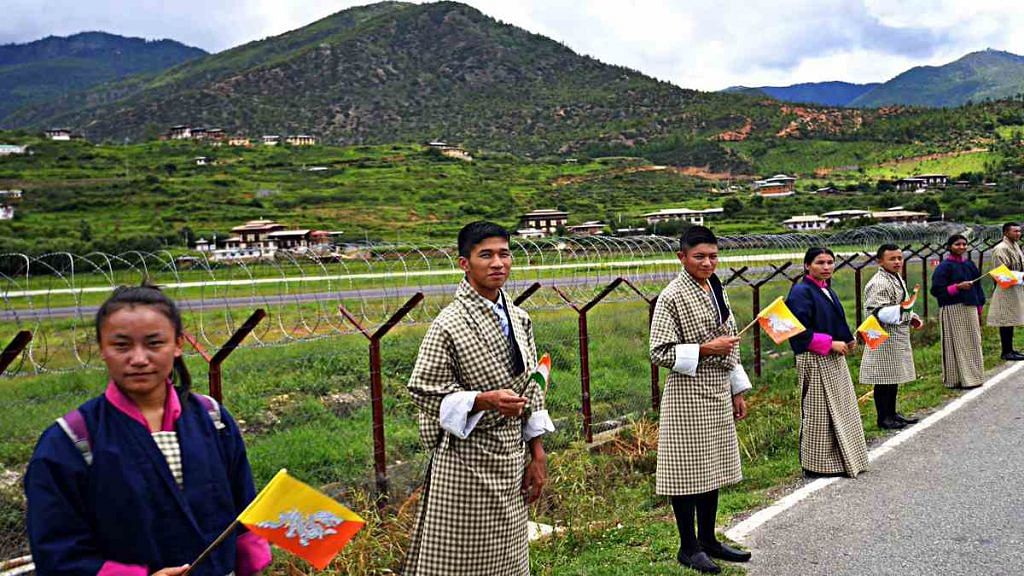New Delhi: India is “talking” to Bhutan amid China’s attempts to stoke a fresh dispute around a wildlife sanctuary that isn’t even contiguous to Chinese territory, ThePrint has learnt.
India, sources said, believes that the main reason Beijing has opened a new front with Thimphu over the Sakteng Wildlife Sanctuary in eastern Bhutan is to “provoke” New Delhi. The sanctuary, they pointed out, shares a border with Arunachal Pradesh, the Indian state China claims as its own.
According to official sources, while India does not intend to get “directly involved” in what it sees as a bilateral issue between Bhutan and China, New Delhi is watching the developments as yet another attempt by China to assert its claim in the Himalayas.
Sources in the Bhutanese government told ThePrint that their boundary with China is under negotiation and has not been demarcated, but reiterated the fact that there is no dispute in its eastern territory.
There have been 24 rounds of border talks between Bhutan and China over the years, with the 25th delayed on account of the coronavirus pandemic, the sources said.
“All disputed areas will be discussed during the next round of boundary talks, which will be held as soon as it is mutually convenient,” a senior Bhutanese official said, adding that the eastern front of their border was never a point of contention between the two.
China’s recent bid to paint the Sakteng sanctuary as disputed has been dismissed by experts as historically inaccurate. Senior Bhutanese journalist Tenzing Lamsang Tuesday posted a 1977 map issued by China that showed the sanctuary well within Bhutan even as it reflected Beijing’s claim on Arunachal.
1977 Chinese map showing Sakteng well within Bhutan while claiming entire Arunachal Pradesh.
This is in addition to many other such maps including recent ones.
Yet to hear of any country in the world disputing its own official maps issued for decades.
Map courtesy @pchilimzam pic.twitter.com/aj2NgnBesp
— Tenzing Lamsang (@TenzingLamsang) July 7, 2020
Also Read: No two countries are ‘natural partners’ as India & Bhutan are: PM Modi tells Bhutan’s youth
The sanctuary row
China’s sudden claim over the Sakteng sanctuary came to light last month during a virtual meeting of the Global Environment Facility (GEF), a multilateral, international initiative that works in partnership with the United Nations.
During a discussion on a project for the sanctuary, China described it as a disputed territory. The claim was at once rejected by Bhutan, which said the Sakteng Wildlife Sanctuary is “an integral and sovereign territory of Bhutan and at no point during the boundary discussions between Bhutan and China has it featured as a disputed area”.
Sources said the Chinese claim on the sanctuary was Beijing’s way of “punishing” Bhutan for the support it gave India during the 2017 stand-off in the Doklam plateau, which falls on the India-China-Bhutan trijunction.
While Bhutan “does not want to be seen” as taking India’s help in their internal matters, official sources said New Delhi is aware that such tensions will impact it more.
Meanwhile, experts agree with the assessment that the fresh Chinese claim is Beijing’s bid to “pressure Bhutan to provoke India”.
“There are no two ways about it. This is an insidious step and they are testing Bhutan by opening this new dispute to assess how close New Delhi and Thimphu get in this,” said former foreign secretary Kanwal Sibal.
“This is also part of their larger pressure tactics on the Himalayan border… There are some major mistakes happening in China’s decision-making. First Nepal, now Bhutan, they are testing us, but by doing this they are only sullying their own image internationally,” he added.
“Bhutan will now have to handle it well. During Doklam also they helped India but publicly they maintained distance.”
Also Read: Bhutan rejects media reports claiming it stopped irrigation water to Assam villages
